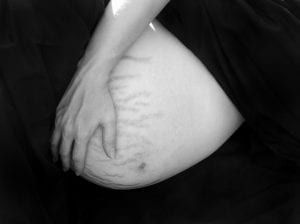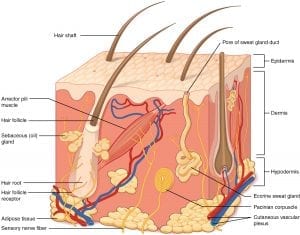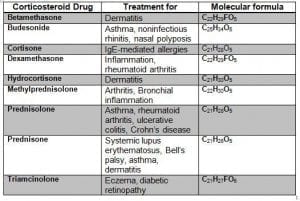Now and then, you may see a TV commercial advertising another revolutionary product that claims to eradicate stretch marks. If you plan to get pregnant soon, maybe the commercial reminds you of your stretch marks concerns, or you already have them but want to know more about them. It can be challenging to look for accurate information on stretch marks during pregnancy, given the prevalence of “miracle” products that claim to remove them in a matter of days. This article will help you understand the basics of a stretch mark and how to prevent it from appearing.

So what are stretch marks? These appear as a mass of indented streaks on the skin, with colors ranging from light brown to deep purple. They can be caused by events that stretch the skin in a short period, such as rapid weight gain or pregnancy. If prompted by the latter, they are referred to as striae gravidarum in the medical literature. To understand how these marks form, you must first know a bit about the structure of the skin.
Understanding The Skin
The skin is composed of three layers. The outermost layer is the epidermis. This layer consists of dead skin cells to form a protective barrier over the rest of the skin. Below it is the dermis, which is comprised of live cells that produce collagen, a fiber that maintains the elasticity and integrity of the skin. This layer is rich in blood vessels, giving it a pinkish hue. After the dermis is the subcutaneous layer, a region composed mainly of fat cells and densely populated with blood vessels.

As the body grows, skin cells multiply to account for the growth of underlying tissues. These cells also produce more collagen fibers, which act as a scaffold for the newly created skin. These processes ensure that the skin remains taut over the body. Most of the time, the skin can keep up with changes in body size. But, there are times when tissues grow so fast that the surface is unable to adjust quickly enough. This is when skin stretch marks occur.
Stretch Mark Formation
To answer the question of what are stretch marks, read through. When there isn’t enough skin being produced to account for tissue growth, such as during pregnancy, some of the collagen fibers stretch and eventually tear. Due to this collapsed scaffold, the dermis layer becomes thinner, exposing the underlying subcutaneous layer. The stretching and tearing make the affected area recede into the body and give it a reddish hue. This color change is due to blood vessels becoming more extensive and more plentiful in deeper skin layers. These purple striae are usually perpendicular to the direction of stretching. Still, their size and number depend on factors such as the amount of stretching and the condition of the skin.
Occurrence And Prognosis
Stretch marks can occur anywhere in the body but are more common in areas prone to rapid increases in size. These include hips, buttocks, and of course, the abdomen. In the case of pregnancy, abdominal striae can sometimes cover the entire abdominal area. An estimated 80% of pregnant women will develop striae gravidarum.

Stretch mark formation usually is painless, although some itching may occur. They also tend to change color over time. As the skin cells proliferate and repair the damage, the dermis heals, and the purple stria takes on lighter hues. However, such stretch marks can persist for a very long time on the skin.
Are stretch marks scars? The process of skin stretch mark aging is similar to how scars develop and age, so technically, stretch marks are scars that originate in the dermis layer since the injury arises internally. This differentiates them from the usual scars we receive from wounds, where the resulting scars form on the epidermis.
Risk Factors Of Stretch Marks During Pregnancy
While anyone can get stretch marks, specific risk factors can increase your chances of getting these striae. For example, genetics play a key. If you have family members who have developed these marks, then you will also probably have stretch marks. The size of the baby also matters, considering larger babies will lead to more significant stretching. While unconfirmed, age may also be a factor as the skin loses elasticity as you grow older.

Any factor that impacts collagen also affects the risk of stretch mark formation. For example, if you take corticosteroids, which are common anti-inflammatory drugs, you might experience more scarring. That is especially true if the medicine is applied topically on the abdomen. Marfan syndrome, a genetic condition that affects collagen formation, and Cushing’s syndrome, which increases levels of the corticosteroid-related cortisol, can make you more vulnerable to stretch marks.
Prevention
Now that we know what are stretch marks, can it be prevented? Despite the numerous treatment options currently offered in the market, many of these have limited efficacy. Treatment options that exist today can provide short-term improvement but fail to give long-lasting results. Hence, prevention is indeed a better option.

First, always make sure that you have a healthy weight. In particular, avoid becoming overweight or obese since the extra body mass imposes greater tension on the skin. Make sure to eat a well-balanced diet, paying attention to your intake of vitamins C and E, as well as the minerals zinc and silicon. The body uses these vitamins and minerals to produce and maintain collagen. Any deficiencies from them will make you more prone to stretch marks. Drink plenty of water every day to hydrate your skin and keep it elastic.
Finally, monitor your weight more closely as your pregnancy progresses. It is typical, even expected, for you to gain weight. Just make sure that any increases are gradual, as opposed to sudden jumps in weight that can cause sudden stretching of the skin.

Stretch marks may seem like the inevitable consequence of pregnancy, but know that you can still do something about them. It is possible to reduce considerably the number of abdominal striae you get by making simple changes to your lifestyle. These changes are also useful for the overall health of you and your baby, helping you prepare for the extraordinary life-changing event of having children.
Frequently Asked Questions On Stretch Marks During Pregnancy
Last Updated on January 12, 2023 by Rejie Salazar
DISCLAIMER (IMPORTANT): This information (including all text, images, audio, or other formats on FamilyHype.com) is not intended to be a substitute for informed professional advice, diagnosis, endorsement or treatment. You should not take any action or avoid taking action without consulting a qualified professional. Always seek the advice of your physician or other qualified health provider with any questions about medical conditions. Do not disregard professional medical advice or delay seeking advice or treatment because of something you have read here a FamilyHype.com.